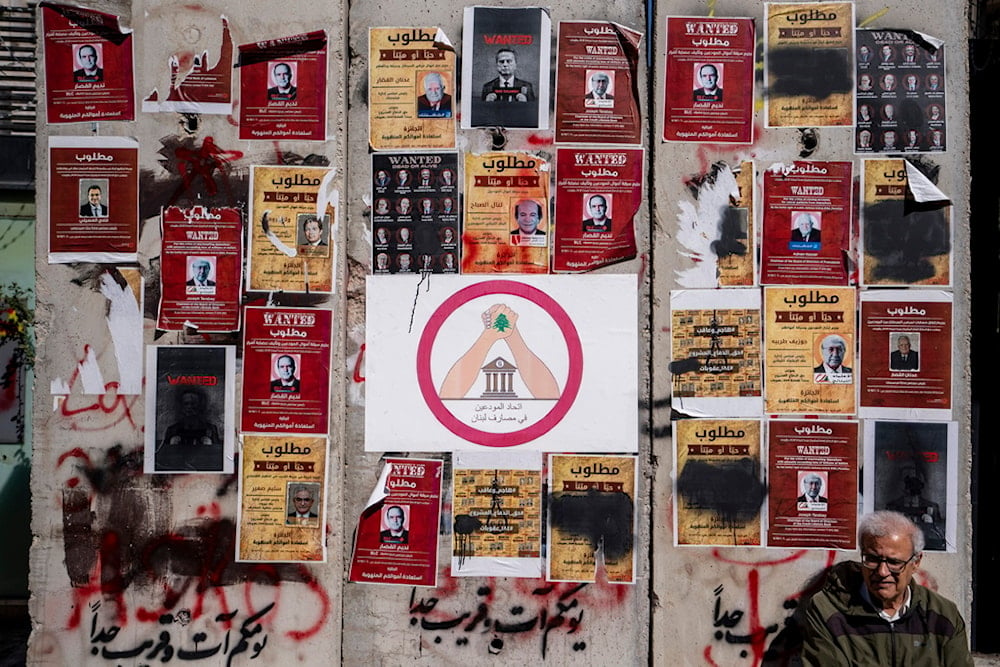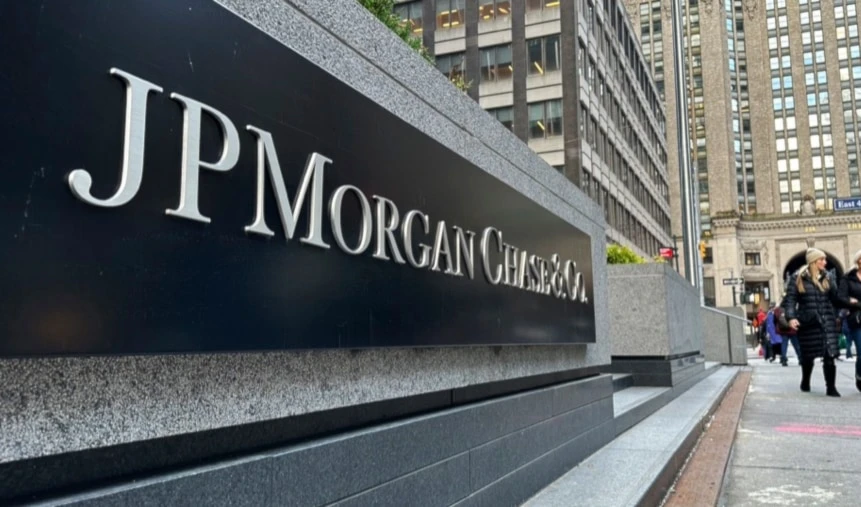Lebanon bonds surge, recovery value remains uncertain: Reuters
Lebanon’s defaulted bonds jumped to 24 cents on IMF hopes, but wide recovery estimates and bank losses cloud prospects for a restructuring deal.
-

A protesting depositor sits in front of a barrier wall that is set outside the Lebanese Central Bank, full of Mock "wanted" posters of Lebanese bank owners and executives during a protest in Beirut, Lebanon, Friday, March 8, 2024. (AP)
Lebanon’s long-defaulted government bonds have nearly quadrupled in price over the past year as investors bet on signs of political and economic progress, but wide-ranging estimates of their ultimate “recovery value” could limit further gains, Reuters reported on Thursday.
Prices have jumped from 6 cents on the dollar a year ago to nearly 24 cents, fueled by the formation of a new government in February that ended more than two years of political paralysis. The move raised hopes that Beirut could access reconstruction funds after the devastating war waged by the Israeli occupation on Lebanon.
Analysts cited by Reuters, however, warn that the rally may be running ahead of fundamentals. The eventual value of the debt hinges on a complex restructuring process, including how much of the “financial gap” at insolvent local banks must be absorbed before the state can direct funds to bondholders.
“Scenarios for recovery are broad, from 20 to 40 cents,” said Roger Mark, a fixed-income analyst at Ninety One. “There are also more negative scenarios whereby we don’t get an IMF deal in the coming year.”
IMF talks and investor appetite
Optimism grew after the International Monetary Fund reported in June that Lebanon had made progress toward a bailout, with IMF staff due in Beirut this month. Morgan Stanley estimated recoveries could reach 40 cents in a positive scenario but might fall to 23-26 cents if talks falter.
After Lebanon’s $31 billion default in 2020, its bonds sank below 6 cents amid a banking collapse and currency crash that erased 99% of the pound’s value. Parliament’s approval of a long-awaited banking sector restructuring law in July, a key reform for an IMF program, has since lifted sentiment.
According to Reuters, Goldman Sachs economist Farouk Soussa noted investors were drawn by the “asymmetry” of ultra-cheap debt but cautioned that current prices “don’t fully reflect downside risks,” including legislation on bank losses and high global interest rates.
Complex path to debt restructuring
Central to the negotiations is the “financial gap”, the hole between banks’ assets and liabilities. The IMF once estimated the central bank could face negative equity of $60 billion, though newer figures suggest it has shrunk. How much the government shoulders will shape what is deemed sustainable for bondholder payments.
Past-due interest, estimated at $14.3 billion by JPMorgan, and the size of creditor “haircuts” will also affect recovery. Yvette Babb of William Blair said pricing above 22 cents is approaching prior estimates but remains attractive relative to other high-yield emerging markets.
Soussa added that limited distressed opportunities elsewhere are feeding demand, “Spreads are tight across EM, and higher US risk premia make Lebanon relatively appealing.”
S&P upgrades Lebanese pound rating
S&P Global Ratings raised in late August Lebanon’s long-term local currency credit rating to ’CCC’ from ’CC’, citing improved fiscal performance and progress on reforms, while affirming its foreign currency rating at ’SD’ (selective default). The outlook remains stable.
The ratings agency said Lebanon’s government had demonstrated an improved capacity to service local currency debt, supported by fiscal surpluses over the past two years and steps toward reforms needed to secure a new IMF program.
Local currency debt has fallen sharply to around 2% of GDP (less than $1 billion) by the end of 2024, compared with nearly 100% of GDP before 2020. The decline followed a 98% depreciation of the Lebanese pound between 2019 and 2024.
'Reforms' under new leadership
Despite the crisis, the government has continued servicing local obligations and, in 2024, resumed interest payments to the Banque du Liban after a three-year suspension. It also pledged to begin repaying arrears this year.
The rating followed parliament's election of Joseph Aoun as president and Nawwaf Salam as prime minister in January 2025. Since then, parliament has passed amendments to the Banking Secrecy Law and approved the Bank Restructuring Law. However, the key Financial Gap Law, which is needed to allocate past losses and compensate depositors, remains pending.
S&P cautioned that Lebanon still faces severe obstacles, including unresolved Eurobond defaults and regional instability. The agency does not expect significant progress on foreign debt restructuring before the 2026 parliamentary elections. It also warned that ongoing tensions between the Israeli occupation and Hezbollah, despite a ceasefire reached in November 2024, continue to hinder recovery.
Since 2019, Lebanon's currency has lost significant value against the US dollar, pushing much of the population into poverty and restricting access to savings. The recent Israeli war on Lebanon has compounded economic challenges, with the country now facing urgent reconstruction needs.

 5 Min Read
5 Min Read










